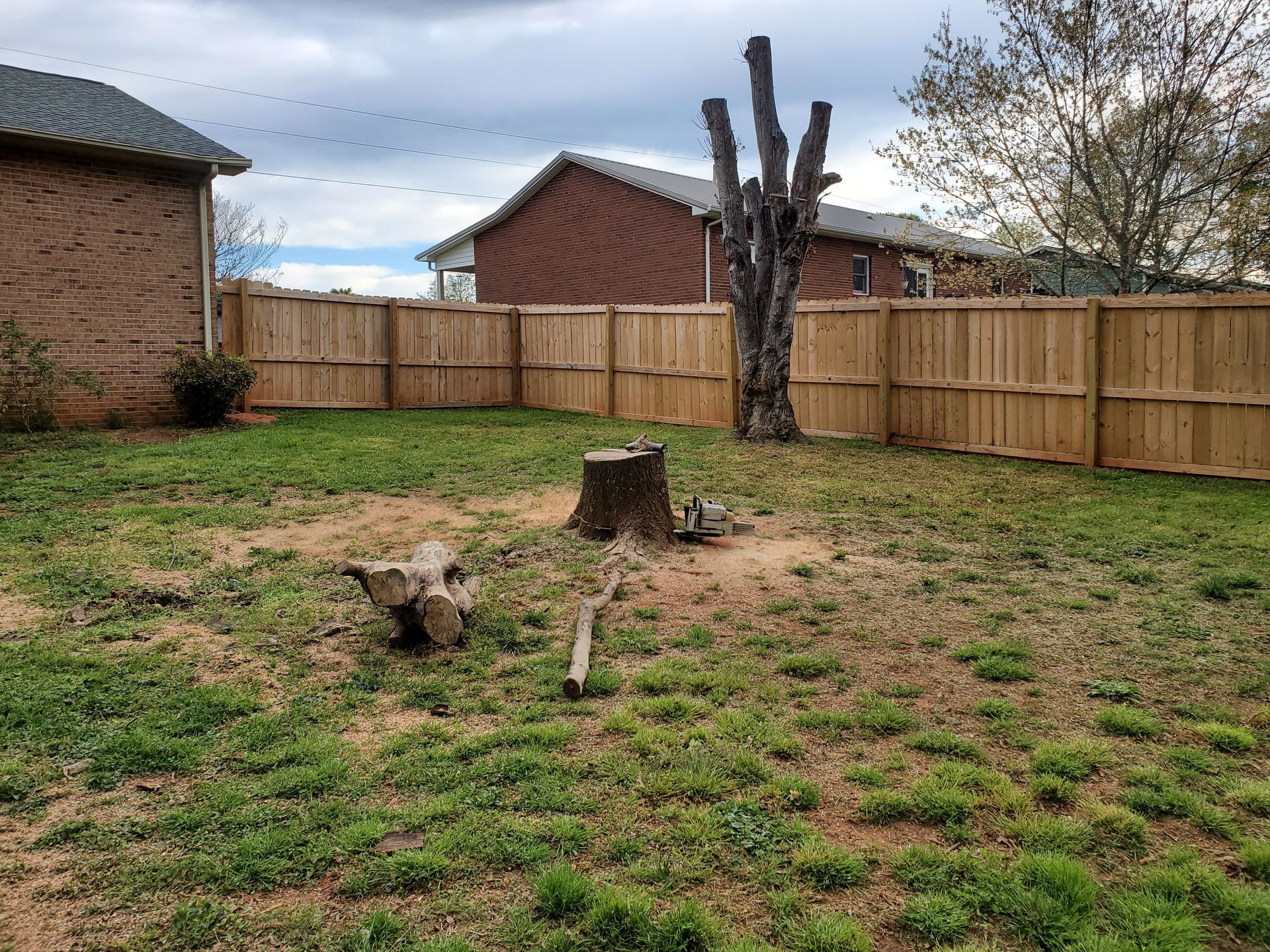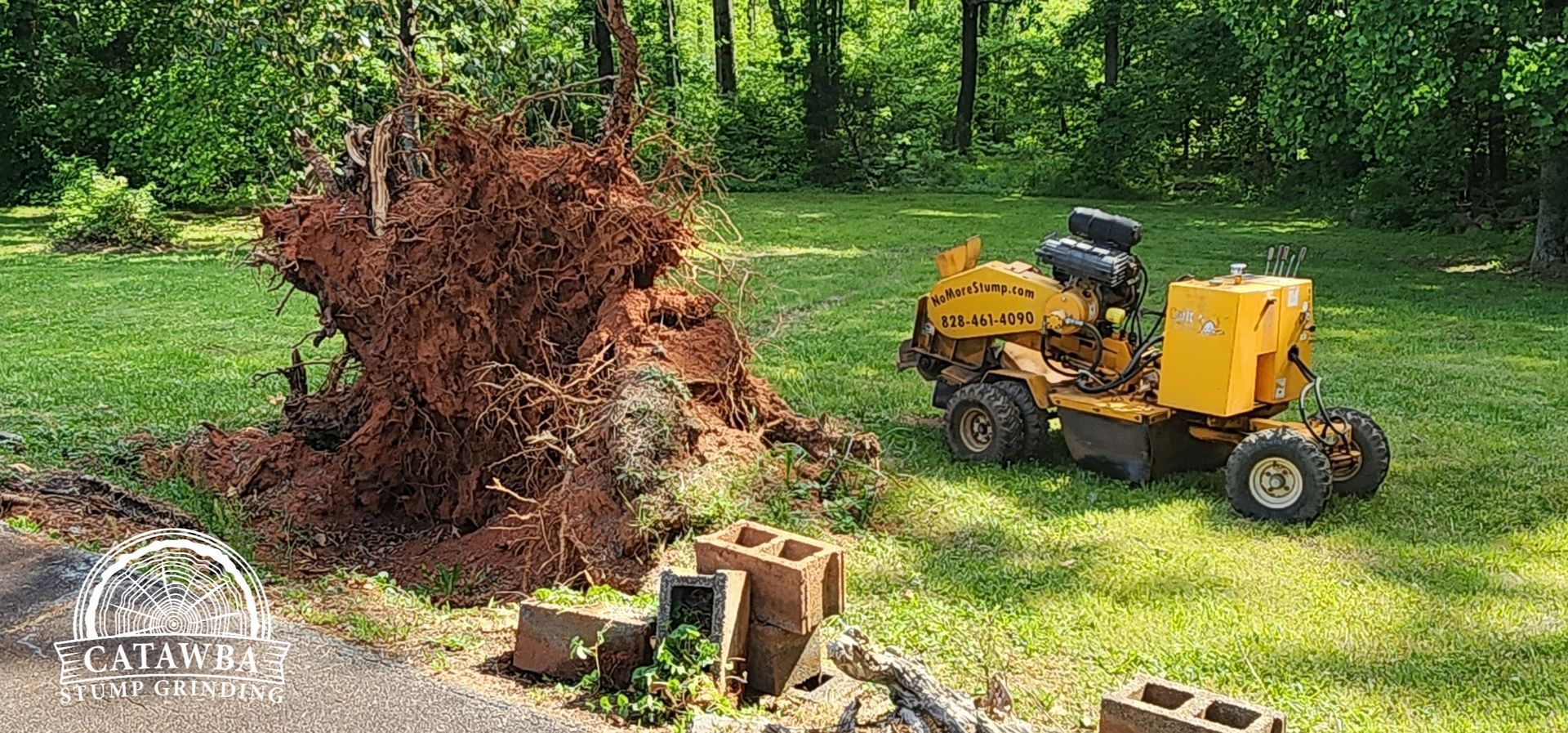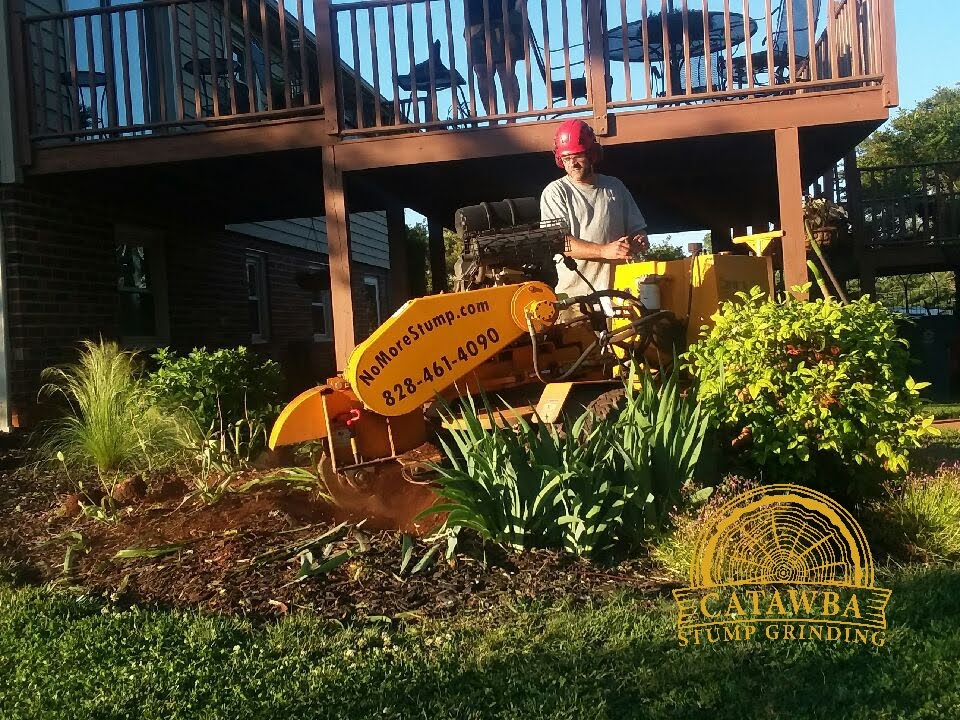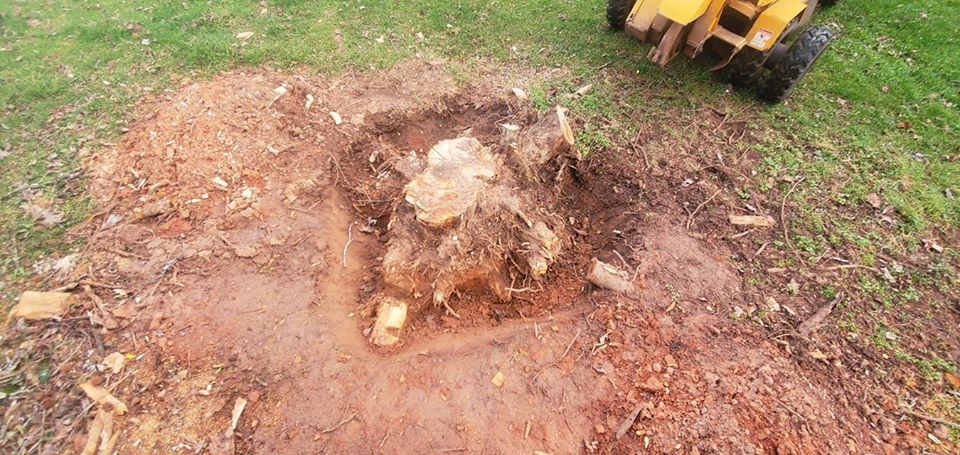Ways to remove a stump
How do I get rid of my stump?

Removing a tree stump can be a challenging task, but there are several effective methods you can consider. Let’s explore some ways to remove a stump. I am partial to hiring a professional stump grinder, but there are other options for those who don't want to go that route.
Allow the Stump to Rot Naturally:
- This approach is low effort yet demands patience. Allow the stump to naturally decompose over time. The process may span several years, influenced by the stump's type and size.
- Cut off as much of the top of the stump as possible with a chainsaw.
- Using a 1-inch spade bit, drill holes evenly spaced around the stump's perimeter to a depth of approximately 12 inches.
- Insert tree stump removal granules into the drilled holes and saturate with water. Allow 4 to 6 weeks for the chemicals to expedite the decomposition process.
- Once the stump becomes soft and spongey, break out the rotten wood with a sharpened felling ax.
- Repeat until all the stump remains are completely gone.
Dig Out the Stump Manually:
- This method involves lots of physical labor but is cost-effective.
- Dig around the stump to expose the roots.
- Use a shovel to cut away the roots and gradually loosen the stump from the ground.
- Pull the stump out once it’s loose enough.
Use a Stump Grinder:
- Renting a power stump grinder can expedite the stump removal process. This machine grinds the wood into small chips, simplifying the removal.
Burn the Stump:
- Pour lighter fluid or fuel oil (never gasoline) into the holes drilled in the stump.
- Wait until the liquid penetrates the wood (this could take a few weeks).
- Drop a match into the holes to start the burning process.
- The stump will continue to smolder for days, ultimately resulting in a hole filled with charcoal. It is crucial to take safety precautions throughout this process. be sure you follow all state and local laws regarding open burning.
Regrade the Area:
After removing a stump, it's important to regrade the area to even it out, making it ready for landscaping or planting. It's essential to select a removal method that aligns with your needs, whether that's a natural process, manual labor, or the use of machinery. Each approach has its advantages and disadvantages, so weigh considerations such as cost, time, and safety when making your decision on how to remove a tree stump. 🌳🪓
Let’s explore the pros and cons of burning out a tree stump:
- Pros of Burning a Tree Stump:
- Relatively Inexpensive: Burning a stump is a cost-effective method compared to some other removal techniques.
- Quick and Easy: It’s a relatively quick way to get rid of a tree Stump.
- Satisfying Project: For enthusiasts of hands-on projects, the experience of burning a stump can be quite gratifying.
- Cons of Burning a Tree Stump:
- Safety Risk: If not done properly, burning a stump can be very dangerous. Ensure proper precautions to prevent accidents.
- Smoke and Ash: The process of burning produces smoke and ash, which can be problematic if there are neighbors or sensitive regions nearby.
- In most city limits it is illegal to open burn. You must check state and local laws and get proper burning permits.
Remember that safety should always be a priority, and it’s essential to follow proper guidelines when burning a tree stump. If you decide to proceed, take necessary precautions and enjoy the process! 🔥🌳🔥
Pros and cons of renting a stump grinder versus hiring a professional.:
- Renting a Stump Grinder:
- Pros: Cost-Effective: Generally, renting a stump grinder may be more cost-effective than hiring a professional service. You also learn a new skill.
- DIY Option: If you're adept at DIY projects, renting a stump grinder gives you the flexibility to handle the job according to your own timetable.
- Portable: Hand-guided stump grinders are lightweight and portable, making them easy to transport.
- Cons: Time-Consuming: Operating a stump grinder can be very time-consuming, especially if you’re inexperienced.
- Safety Risks: Operating heavy machinery involves inherent risks, thus proper safety precautions are crucial. Additionally, effectively using a stump grinder requires certain skills and practice.
- Insurance: If an unexpected event occurs, like hitting a gas line or a rock breaking a neighbor's window, your homeowner's insurance will likely not cover the resulting damages.
- Hiring a Professional Stump Grinder:
- Pros: Timesaving: Experienced professionals can remove stumps efficiently, saving you valuable time.
- Expertise: They understand different types of stumps and can handle various situations.
- Safety Assurance: Professionals give top priority to safety and adhere to best practices.
- Cons: Cost: Engaging a professional may involve a higher initial investment, but it guarantees a smooth and stress-free experience.
- Limited Freedom: You’ll need to coordinate schedules with the professional (most of the time you do not have to be home for the work to be performed).
- Pros: Insured: Professionals carry insurance, so in the event of unforeseen incidents—such as striking a gas line or a rock breaking a window—they have coverage to address the damages incurred. "Catawba Stump Grinding has a double $1,000,000 policy with a $0 deductible".
More pros and cons to come later, be sure to check back.
Feel free to contact us with any questions, we would be glad to help.






